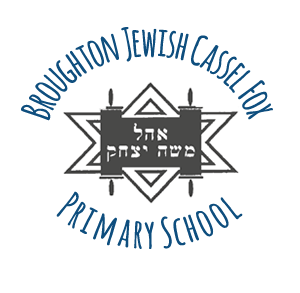Geography Curriculum Statement
Intent
Our geography curriculum has been specifically tailored to meet the unique context of our school and is linked to our English topics throughout school following the success of this model through home learning. It is designed to be broad and balanced, providing all pupils with the opportunity to master their learning and deepen their knowledge, making sense and giving purpose as to why we learn about geography.
At Broughton Jewish we follow a broad and balanced geography curriculum, which promotes and answers questions about nature and the human worlds. It encourages a greater understanding of their world and the children’s place within it. We recognise the location of our city and the community are a vital resource to be investigated. This enables pupils to be curious and inspired to understand how human and physical geographic features are constantly changing around them and in the wider world.
We aim to build high levels of competence in the subject specific skills of:
- Knowledge and understanding of places
- Geographical skills and enquiry
- Human and physical geography
Implementation
Geography is taught through the framework of the 2014 National curriculum. The principles and content of its requirements have been carefully placed at the heart of the school’s programme of study in geography.
We follow a curriculum overview based on topics. These plans are closely linked to the school’s Age- Related Expectations (ARE’s) in geography for each year group, which allows a consistent application of the curriculum throughout the Key stages. A curriculum coverage file is kept for each cohort and google earth is used to create a deeper understanding of the areas we study. This enables both class teachers and the subject leader to monitor coverage and identify progress made throughout the lifetime of a cohort in the school.
A whole school system is used which links the ARE to each child’s own research and classroom studies and assessment.
This is done through:
- Higher order questioning: with specific overriding questions for each Geography unit
- Knowledge organisers: with key facts and vocabulary to help children link prior learning
- KWL grids: used as a prior learning, monitoring and assessment tool
- Creating links with the wider curriculum e.g. Our local area
Assessments are carried out in various forms.
- Quizzes, projects, fact files and reflective KWL grids.
Outcomes from these are used to inform teachers which areas have been covered and to what extent the year-group achieved the AREs. This combined with other forms of monitoring help to inform aspects of learning that need to be strengthened to improve the quality of provision and to enhance pupil progress.
Impact
A high quality of geographical education aims to develop a range of investigation and problem- solving skills that are transferable to other curriculum areas, particularly Science, Maths, English and History.
Children will:
- Acquire new vocabulary.
- Build skills that enable them to collect and interpret data gathered from fieldwork.
- Interpret a range of sources of geographical information, including maps, diagrams, globes, aerial photographs and Google Earth.
- Develop research and presentations skills, which can be used alongside ICT and Art and Design mediums.
We aim to inspire a curiosity and fascination about the world and its people which will remain with them for the rest of their lives; to promote children’s interest and understanding about diverse places, people, resources and natural and human environments, together with a deep understanding of the Earth’s key physical and human processes.

